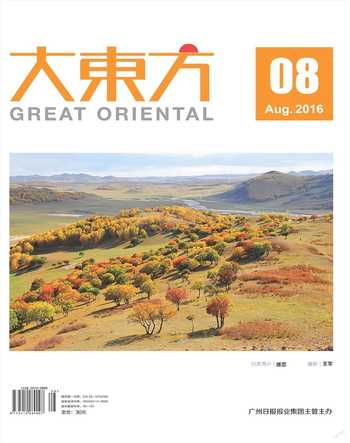Expanding the Manufacturing of Small Cars or Controlling
周胜瑛
Two decades ago, even the busiest street in Beijing was virtually desolate. Now, blaring horns and pungent exhaust are a dominant part of the Chinese capitals landscape.
Having established a presence in China almost a century ago, Buick, manufactured by GM, is one of the best-known names in the country. Today, GMs massive new Shanghai plant is turning them out in record numbers - 100,000 this year - and they are flying out of the showrooms.
I dont think we should expand the manufacturing of small cars so fast. My personal point of view is that China is not ready for the automobile age. The world average is one car for every eight people. If China has that ratio, it will have 150 million cars. Where do we put all those cars?
Now, having experienced the joys and freedoms that come with their automobiles, drivers are rapidly becoming accustomed to the disadvantages of life on the road: gridlock, pollution, and an epidemic of deadly accidents. Bicyclists, who still outnumber drivers 100 to 1, are quickly becoming an endangered species on city streets.
The size of the population relative to the size of the country has important implication for transportation. According to the National Bureau of Statistics, some 1.36 million cars were sold in China during the first four months of the year 2003 with at least 800,000 bought by private owners. At the end of 2001, there were some 7.7 million privately owned cars on Chinese roads, compared with 18 million publicly owned cars, according to state statistics. China recently surpassed France as the worlds fourth largest car manufacturer and now trails the United States, Japan and Germany as the worlds largest automobile producing nation. In the U.S. there are more cars and trucks and buses per person than anywhere else. There are 1.9 people per car. There is an average of only 66 persons per square mile. While there are a great many cars and trucks in the U.S., there is also an enormous area in which to put them. But in China the situation is different. We have large populations and not enough roads and highways for so many cars although the Chinese government builds thousands of miles of new highways. We should develop public, state-supported mass transportation systems _ buses, commuter trains, street–cars, subways. It will take less time and less money to go work by bus or by commuter train or by subway than by car.
More and more cars may have many unforeseen social effects, particularly in terms of the environment. Cars and trucks are still a major source of pollution. The environmental pollution may contribute to human diseases and lead to climatic changes that could cause a new ice age. For ourselves and our health as well as our environment, we should control the manufacturing of small cars.
Since the 1970s, a national speed limit of 55mph (about 88km/h) has been in effect in America. Studies show that there is less pollution at lower speeds, gas is saved, and, perhaps most importantly, there are fewer serious accidents.
From January to April, 2003 traffic accidents in the metropolis soared by 3,000 to 18,000 incidents, in which 468 people died and 3,843 were injured, Xinhua news agency reported. Four people die each day on the roads of Chinas largest and most prosperous city Shanghai. A sharp increase in the number of cars on Shanghais 3,800 roads was largely to blame for the increase in accidents in the city of about 16 million people, the report said. Of course drivers poor understand of traffic regulations was also to blame for the surge in accidents. For our own lives and others lives, we should not produce so many cars at present.
Although expanding the manufacturing of small cars can develop our economy, give us a lot of chances of employment and make us go outside more conveniently, the harm of it is great.
(作者单位:天津农学院基础科学学院)

